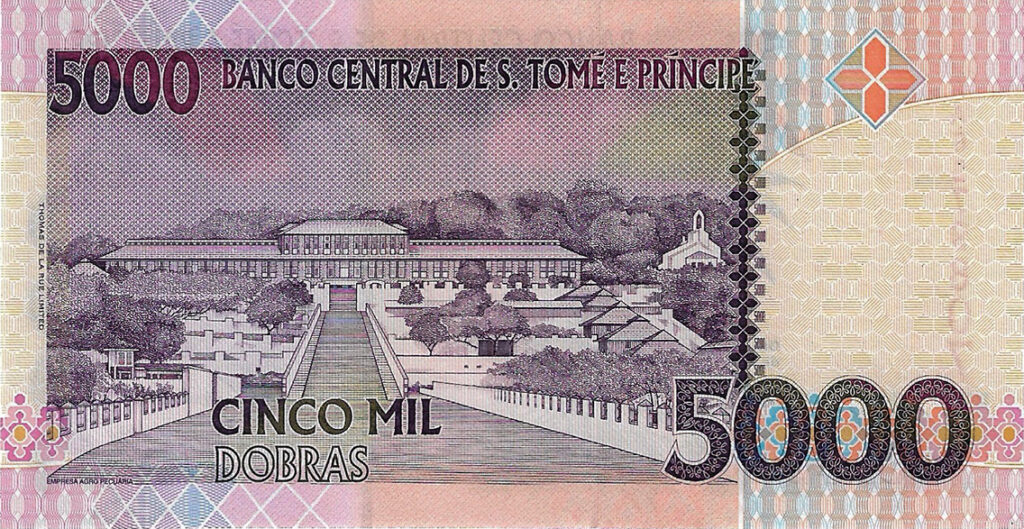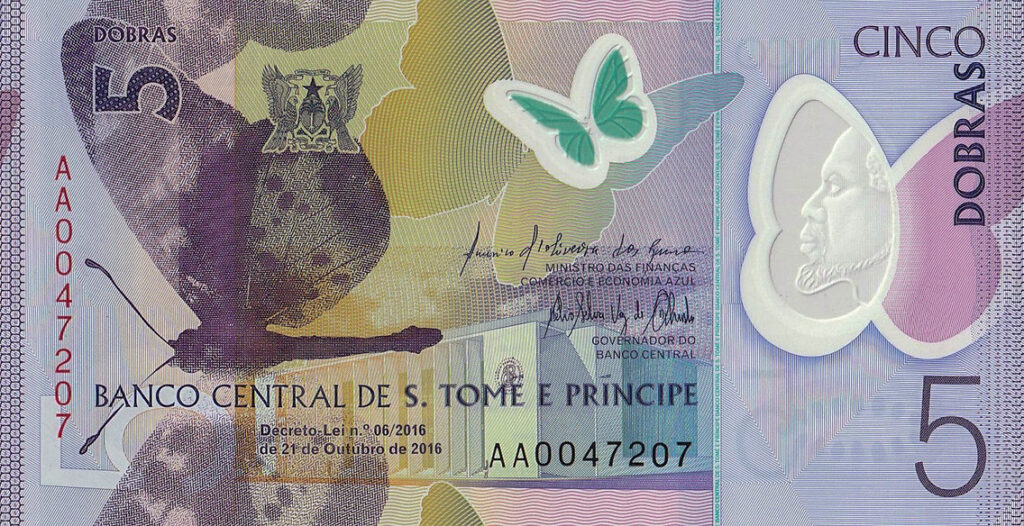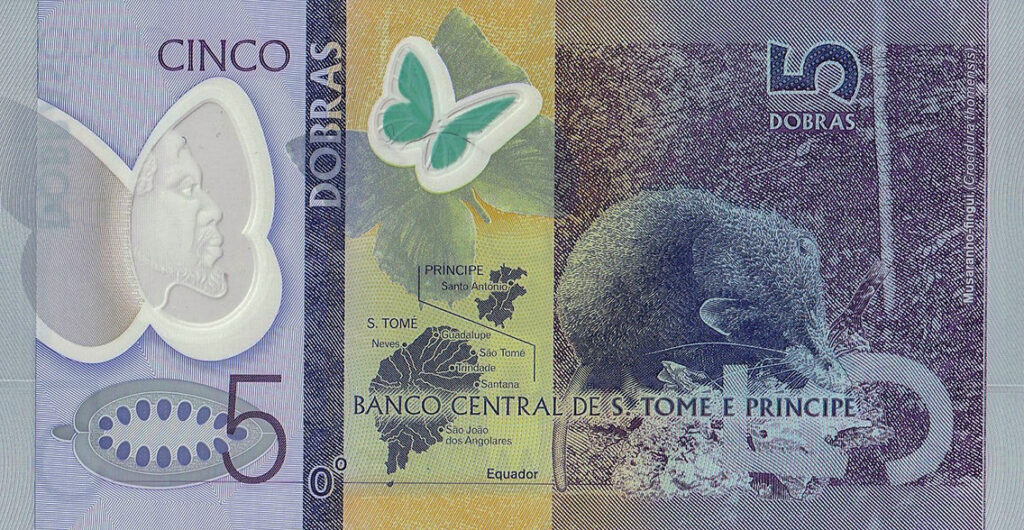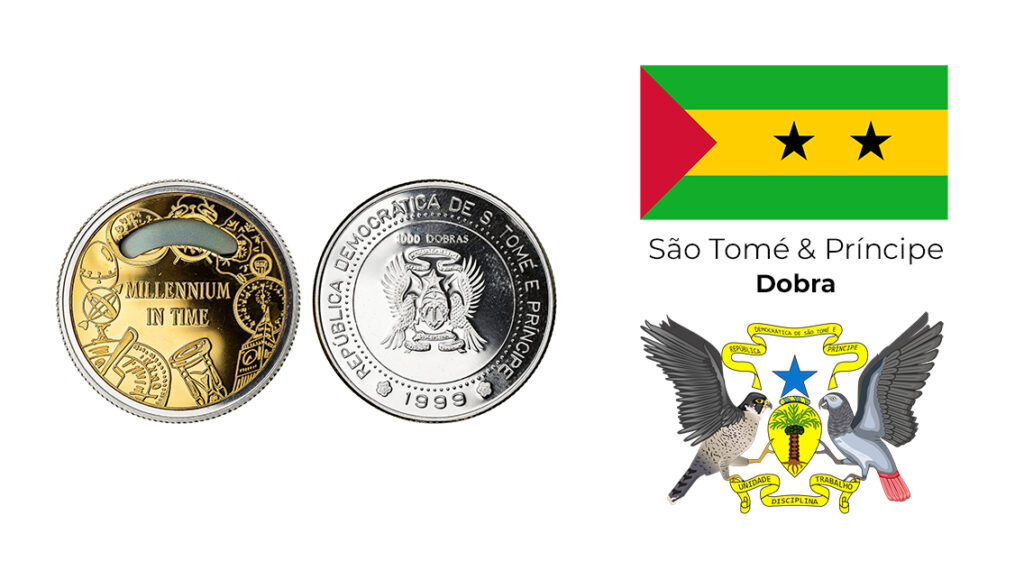
The rise and rise of São Tomé & Príncipe Dobra
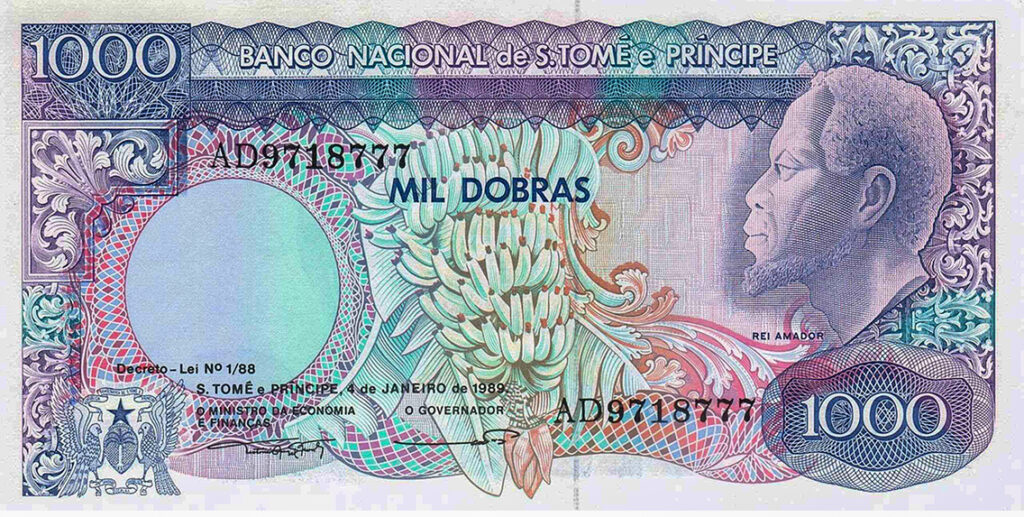
The history of this idyllic off-shore archipelago of islands unusually named as São Tomé & Príncipe (Also known as St. Thomas and Prince) goes back to 1470 CE when two Portuguese explorers – Joao de Santarem and Pedro de Escobar – landed here in their quest of discovering new lands. Devoid of any human habitation, the islands provided an easy entry for the Portuguese who turned it into a settlement. The first inhabitants were mostly taken from exiled Jews and Prisoners. Soon, São Tomé & Príncipe became a success story. Aided by its share of rich black soil, cultivation of Sugarcane found popularity, making São Tomé & Príncipe a hotpot in Sugar trade. With trade entered slavery and rivalry amongst stake holders. A slave rebellion in 1595 CE caused local unrest and resulted in the Sugar trade getting shifted to Brazil. The natives moved to farming of Cocoa, Copra and Coffee and bringing back prosperity. By 1951 CE, São Tomé & Príncipe became a Portuguese Overseas province. Military coup at Portugal led to independence of Guinea-Bissau, Mozambique, Cape Verde, Angola and São Tomé & Príncipe in 1975. Occupying a serene spot in the Gulf of Guinea off the west African coast, São Tomé & Príncipe – the second smallest African nation – today presents a picture of peace and contentment.
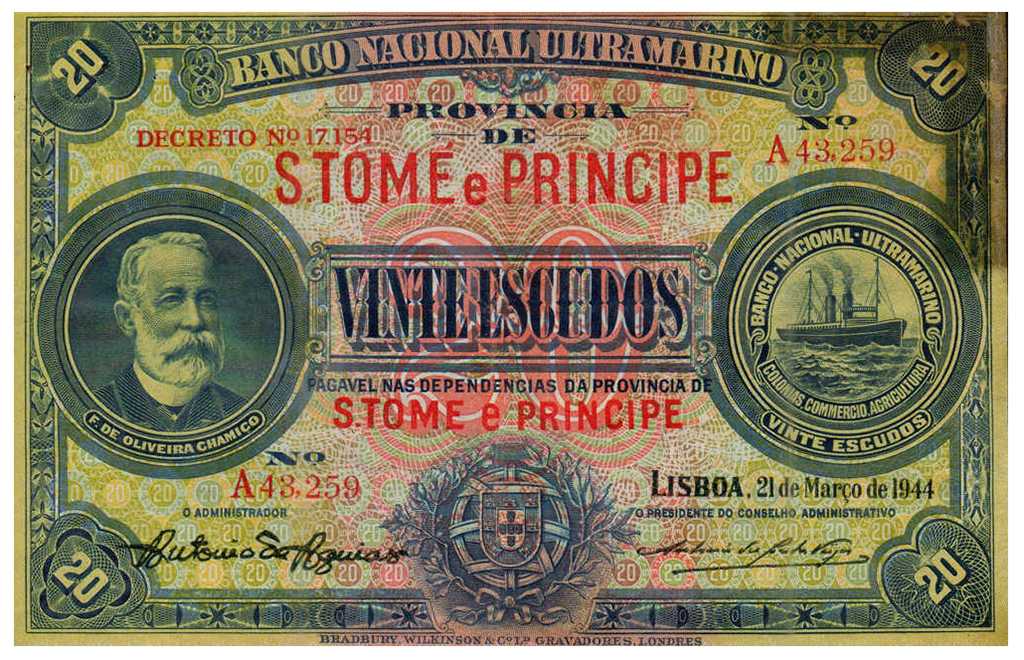
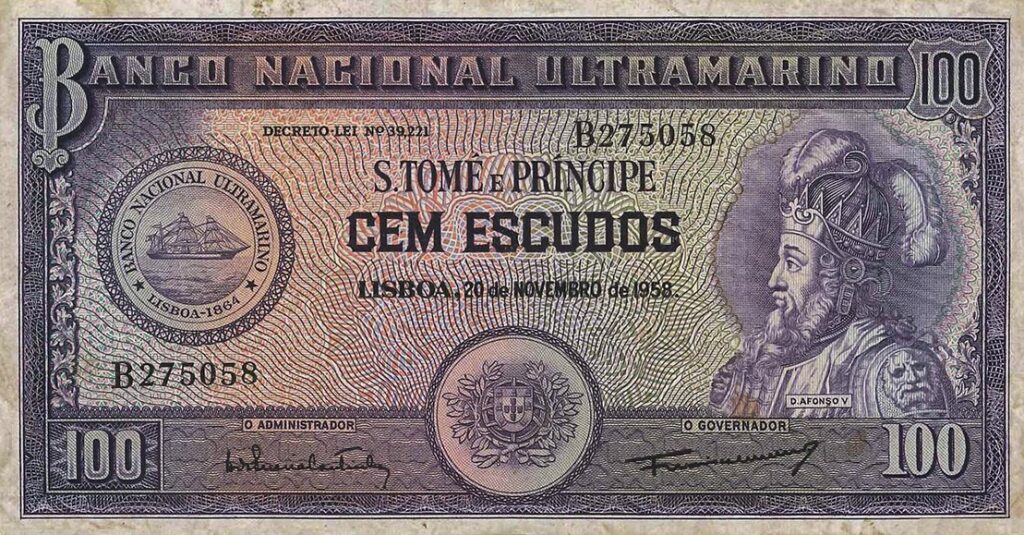
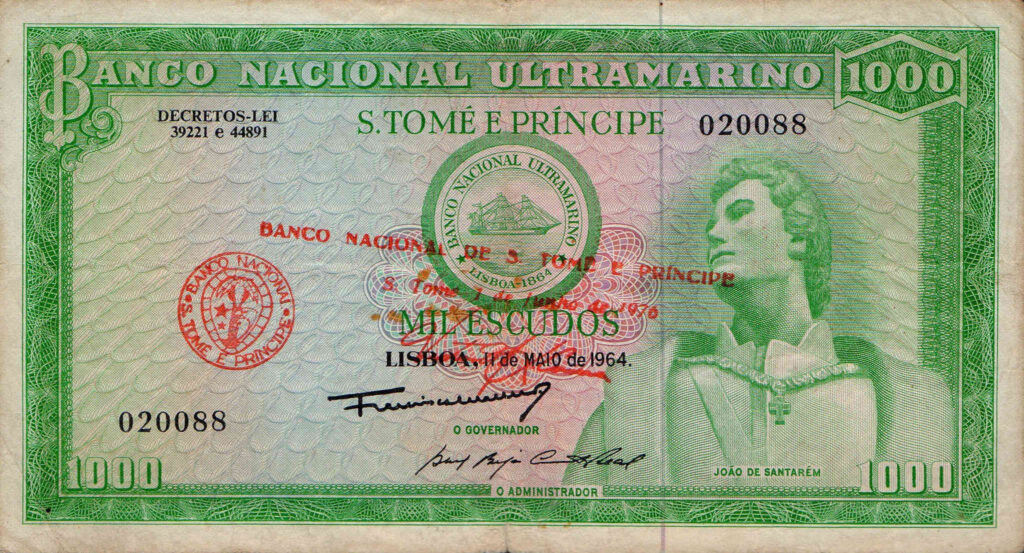
In 1868 CE, Banco Nacional Ultramarino (BNU), the overseas banking authority legalized by the Portuguese Royalty for circulation of banknotes in Portuguese colonies, started operations in São Tomé & Príncipe. The first issues had no specific marks for São Tomé & Príncipe, that appeared only by 1921 CE (S. Tome e Principe). Around 1946, “S. Tome e Principe Colonia Portuguesa” was stamped over banknotes issued by BNU. It was later changed to “S. Tome e Principe” in 1958. 1974 heralded a new era; BNU wrapped up and after independence in 1975, Banco Nacional se Sao Tome e Principe (eventually Banco Central de Sao Tome e Principe) took charge. The first issue of banknotes in Dobras was launched in 1977 (1 Dobra = 100 Centimos) with its value pegged equivalent with the erstwhile Escudo. The banknotes designed to match with the high standards of printing chose the iconic image of Slave Rebel Amador Vieira, locally known as Rei Amador. A slave himself, Amador had spearheaded the slave rebellion of 1595 CE. Exotic Flora and Fauna of São Tomé & Príncipe have also been augmented to arrive at a brand new identity – a complete changeover from the colonial past.
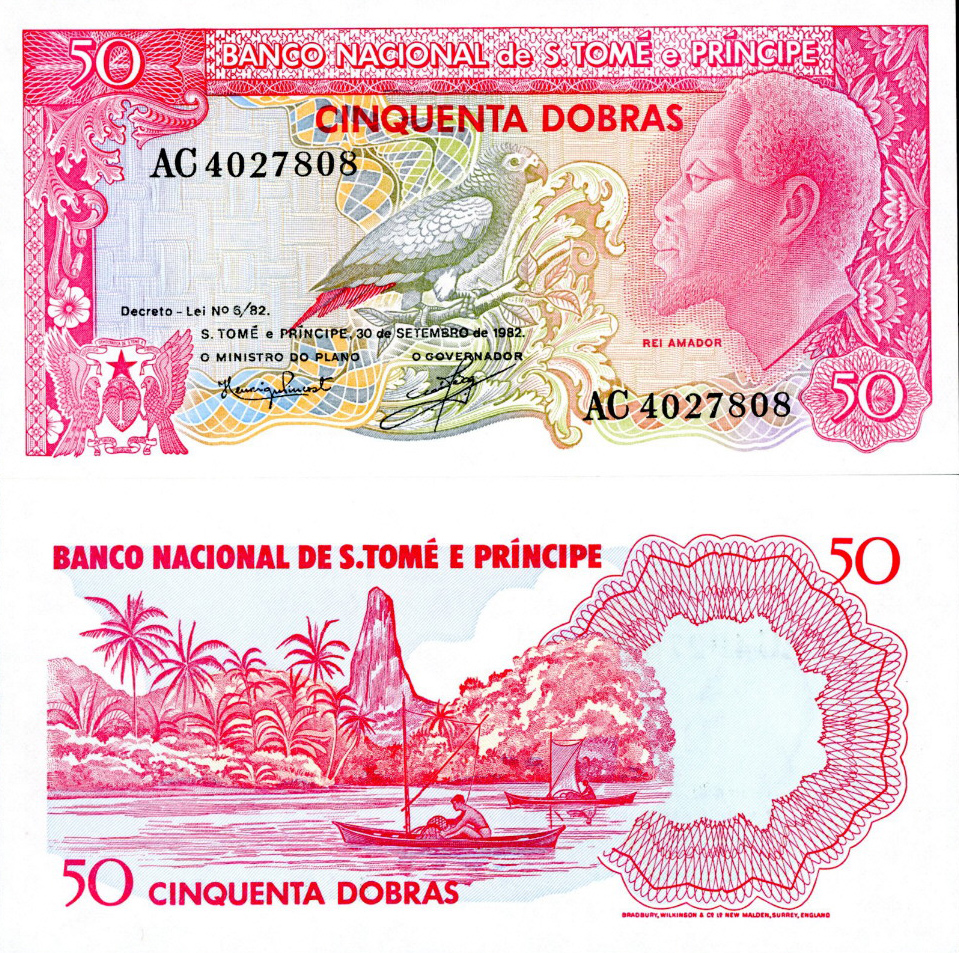
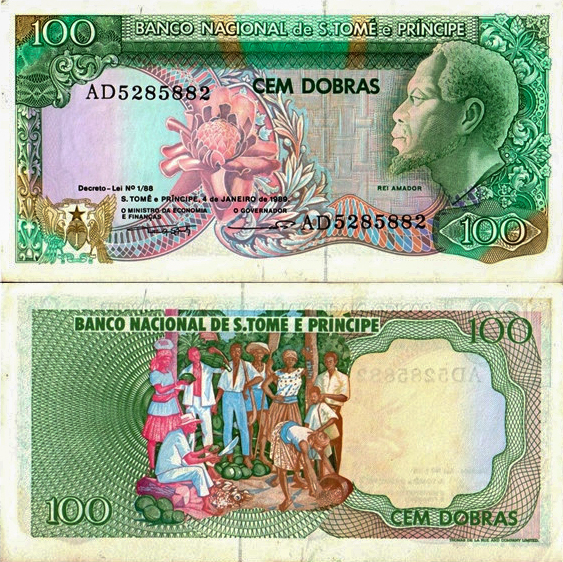
Main Features | São Tomé & Príncipe has effectively shrugged off the colonial hangover quite fast. To do this, Banco Central de Sao Tome e Principe adopted Rei Amador as the most prominent human face. In addition to the iconic slave hero, the Dobras have given significant importance to the natural beauties of São Tomé & Príncipe. On the observe, there are (i) Numerals for Denominations and Serial Number in two sizes, both in vertical and horizontal orientation (ii) Texts for Denomination in words, Issuing Authority – Banco Central de Sao Tome e Principe with two signatories, and date of issue (iii) Images – Iconic portrait of Rei Amador merged with natural beauties such as birds, butterflies and the national Coat of arms. The reverse is flat with (i) Numerals for denomination in two sizes, one each in vertical and horizontal orientation (ii) texts include Banco Central de Sao Tome e Principe and denomination in Dobras (iii) Single image with merging patterns serving as Background. The banknotes have been printed by Thomas De La Rue Limited, a firm that has been in the business since 1821 CE. In 2016 São Tomé & Príncipe took a lead by issuing polymer banknotes wherein, the iconic Rei Amador has moved into the watermark while wondrous creatures of nature have taken Centre stage.

